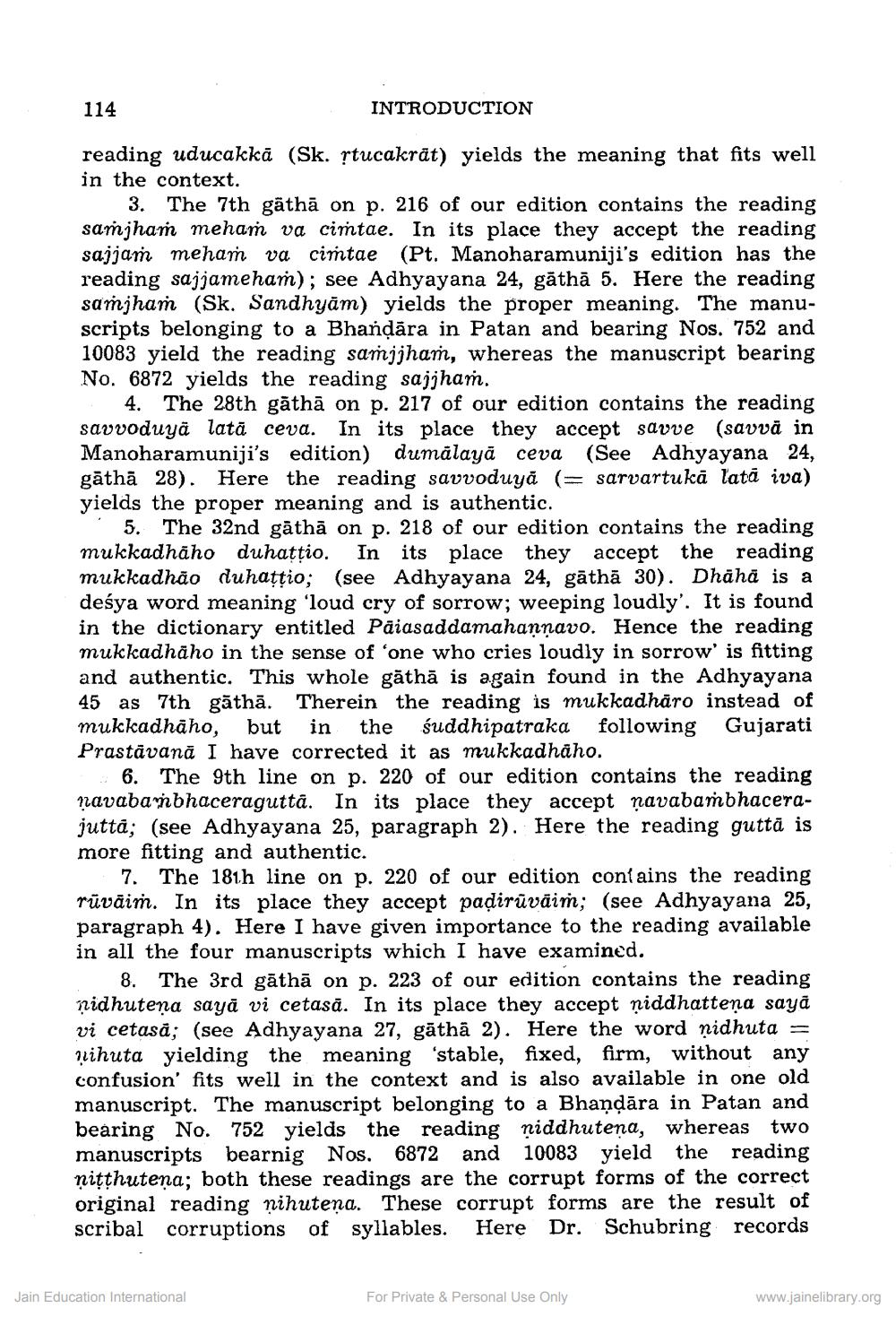________________
114
INTRODUCTION
reading uducakkā (Sk. Țtucakrát) yields the meaning that fits well in the context.
3. The 7th gathā on p. 216 of our edition contains the reading samjham meham va cimtae. In its place they accept the reading sajjan meham va cimtae (Pt. Manoharamuniji's edition has the reading sajjameham); see Adhyayana 24, gāthā 5. Here the reading samjham (Sk. Sandhyām) yields the proper meaning. The manuscripts belonging to a Bhandāra in Patan and bearing Nos. 752 and 10083 yield the reading samjjham, whereas the manuscript bearing No. 6872 yields the reading sajjham.
4. The 28th gãthā on p. 217 of our edition contains the reading savvoduyā latā ceva. In its place they accept savve (savvă in Manoharamuniji's edition) dumalayā ceva (See Adhyayana 24, gāthā 28). Here the reading savvoduyă (= sarvartukā latā iva) yields the proper meaning and is authentic.
5. The 32nd gathā on p. 218 of our edition contains the reading mukkadhāho duhattio. In its place they accept the reading mukkadhão duhattio; (see Adhyayana 24, gāthā 30). Dhāhā is a desya word meaning 'loud cry of sorrow; weeping loudly'. It is found in the dictionary entitled Păiasaddamahannavo. Hence the reading mukkadhāho in the sense of 'one who cries loudly in sorrow' is fitting and authentic. This whole găthā is again found in the Adhyayana 45 as 7th gãthā. Therein the reading is mukkadhāro instead of mukkadhāho, but in the suddhipatraka following Gujarati Prastāvanā I have corrected it as mukkadhaho.
6. The 9th line on p. 220 of our edition contains the reading zavabanbhaceragutta. In its place they accept navabambhacerajutta; (see Adhyayana 25, paragraph 2). Here the reading guttă is more fitting and authentic.
7. The 181h line on p. 220 of our edition contains the reading rūvāim. In its place they accept paạirūvāim; (see Adhyayana 25, paragraph 4). Here I have given importance to the reading available in all the four manuscripts which I have examined.
8. The 3rd gāthā on p. 223 of our edition contains the reading şidhutena sayā vi cetasā. In its place they accept niddhatteņa saya vi cetasă; (see Adhyayana 27, gāthā 2). Here the word nidhuta = minuta yielding the meaning 'stable, fixed, firm, without any confusion' fits well in the context and is also available in one old manuscript. The manuscript belonging to a Bhandāra in Patan and bearing No. 752 yields the reading niddhutena, whereas two manuscripts bearnig Nos. 6872 and 10083 yield the reading niţthutena; both these readings are the corrupt forms of the correct original reading nihutena. These corrupt forms are the result of scribal corruptions of syllables. Here Dr. Schubring records
Jain Education International
For Private & Personal Use Only
www.jainelibrary.org




